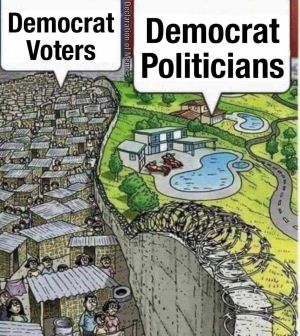Two-Party System
The Two-Party System: The Illusion of Choice and the Great Lightbulb Debate
In the grand theater of democracy, the two-party system is our leading act, a production featuring two parties—let's call them, for example, Democrats and Republicans—that tirelessly claim to stand for vastly different values while somehow managing to produce the same disappointments. Like a light bulb in need of changing, the two parties trade power, argue over whose ideology is superior, and then... leave the bulb flickering, at best, or in complete darkness, at worst. This political machinery presents itself as the beacon of "freedom of choice," but when the only options are two nearly identical candidates, it feels a lot less like freedom and more like being forced to pick between the same meal, reheated and repackaged.
And so, we arrive at the age-old joke about politicians and lightbulbs.
"How many politicians does it take to change a light bulb?"
Two, they say. One to change it, and the other to change it back again. But, naturally, it isn’t that simple, is it? When it comes to political action, every decision, no matter how simple, undergoes a process of debate, deliberation, delegation, documentation, and ultimately... delay.
Here’s a more accurate breakdown:
- One politician notices that the light bulb is out (months after the public first noticed).
- Two discuss it over drinks, in a private room on the taxpayer’s dime.
- Three debate the importance of forming a committee to discuss the urgency of this bulb.
- Four fill out paperwork to form a committee for lightbulb research and strategy.
- Five then notify other politicians of the intent to form the committee.
- Six scrutinize the process of committee selection, including finding and appointing the right friends, consultants, and experts.
- Seven actually sit on the committee, assigning each other various positions of importance to decide whether the light bulb needs immediate attention or can wait until the next election cycle.
- And finally, the remaining 600 fill out their expenses for lunches, hotel stays, and flights as they watch one lone, overqualified electrician finally change the bulb—at twice the cost of a regular electrician.
This absurdist comedy isn’t far from the reality. While the Democrats and Republicans claim to be at ideological odds, their decision-making process resembles the same inefficient dance: spend years debating, yield little tangible change, and, in the end, the light bulb barely flickers with the faintest glow.
The Titanic: Selecting a Captain for a Sinking Ship
The American two-party system functions much like electing a captain to steer the Titanic as it sinks. Both parties announce bold, sweeping solutions to budget deficits, climate change, and healthcare reform every election cycle, but neither does much beyond the pageantry. Imagine a captain arguing with his co-captain over which angle the iceberg was hit from or whose navigation skills might have avoided the iceberg altogether. Meanwhile, the ship still sinks, and the passengers (the voters) are left to fend for themselves.
Budget deficits, for example, have been a cornerstone issue for both parties since the invention of currency, yet neither has effectively reduced the national debt. Instead, they often agree on one thing: more spending. Democrats push for social programs, Republicans champion defense budgets, and both parties insist that the other’s spending is the real problem. The result? A perpetual debt spiral that simply increases with every election cycle, passed down like a family heirloom to future generations.
The Illusion of Choice: Two Sides of the Same Coin
For voters, the two-party system creates a “damned if you do, damned if you don’t” scenario. Democrats promise social justice, environmental reform, and healthcare improvements but often leave their base disappointed as they make compromises with corporate interests. Republicans, on the other hand, champion economic freedom, traditional values, and fiscal conservatism, but frequently leave their supporters wondering why small government looks so much like bigger budgets and endless wars.
When push comes to shove, both sides perpetuate a similar status quo—corporate influence, deepened deficits, and half-hearted reforms that rarely seem to address the needs of everyday people. The parties are two sides of the same coin, locked in a power struggle that rarely produces meaningful results. Each election offers voters a choice between two flawed options, both beholden to donors and lobbyists, both entrenched in bureaucracy, and both reluctant to rock the boat too much lest they upset the interests that fund their campaigns.
The Practical Effects: All Talk, Little Change
The problems with the two-party system are no longer abstract—they affect real lives. Instead of serious budget reform, both parties continue to balloon the deficit, pouring money into pet projects and partisan priorities while neglecting genuine solutions. And as for systemic issues like healthcare, education, and income inequality? The issues are discussed, promises are made, campaign ads are produced, but when it comes time to act, real reform is slow, incremental, and often watered down.
Voters are left with two options that fundamentally agree on one thing: preserving the status quo. Any candidate offering real change, even if popular among the public, often gets sidelined by the party apparatus, labeled as “too extreme” or “unelectable.” In the end, the two-party system functions as a well-oiled machine that keeps voters engaged just enough to prevent any real change, yet disillusioned enough to feel that every election is a choice between the lesser of two evils.
Conclusion: To Change or Not to Change (The Light Bulb)?
And so, the light bulb remains flickering. As the parties continue their theatrics, claiming every election is the most important in history, we’re left with a dimly lit democracy. Perhaps, as the old joke suggests, it’s time to skip the bureaucratic circus and focus on the qualified electrician—the leaders who can truly fix things rather than debate the need for change.
Until then, we’ll continue with the illusion of choice, electing one party to replace the other, hoping this time, somehow, the light bulb will stay bright.

